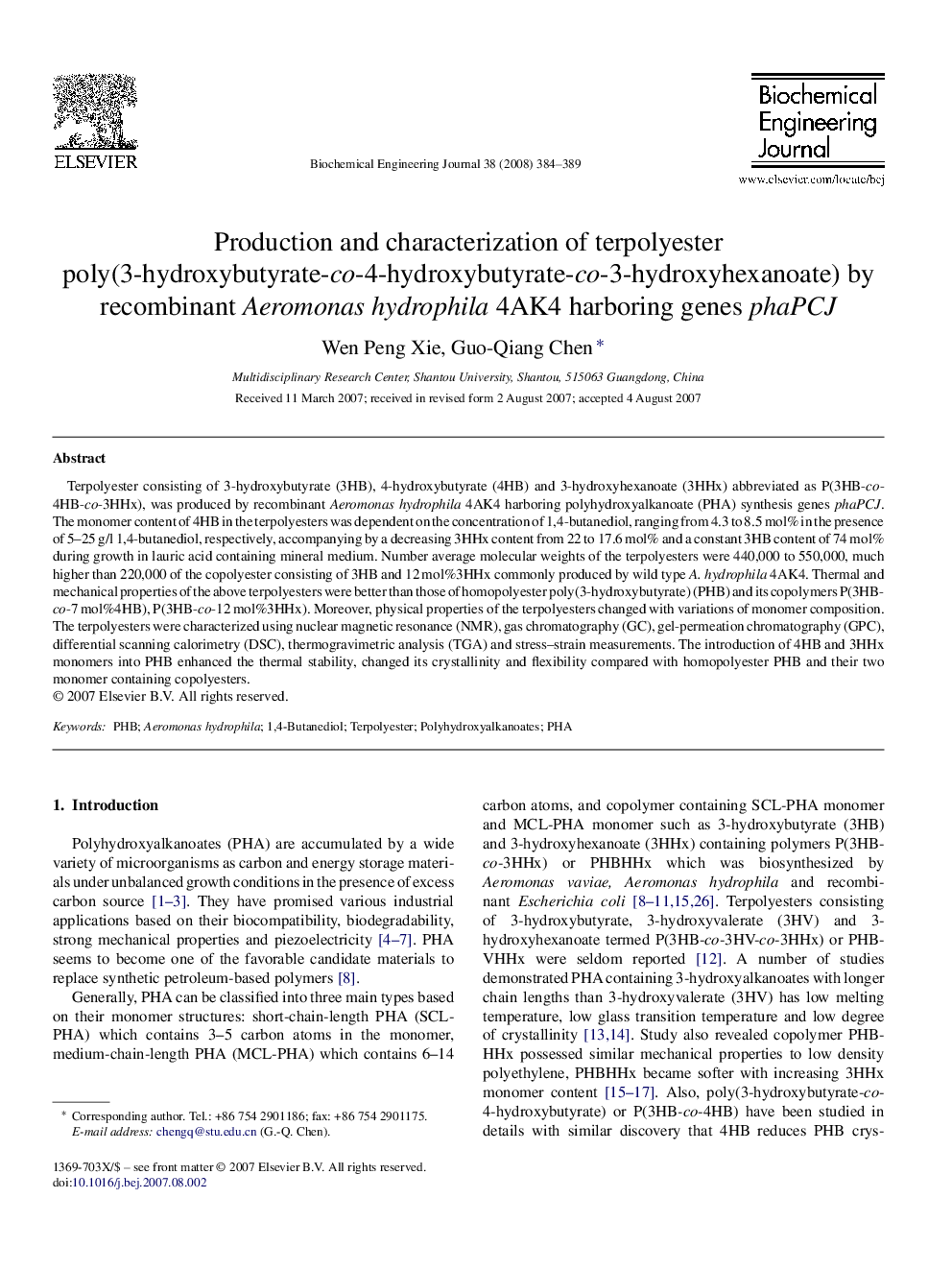| Article ID | Journal | Published Year | Pages | File Type |
|---|---|---|---|---|
| 4659 | Biochemical Engineering Journal | 2008 | 6 Pages |
Terpolyester consisting of 3-hydroxybutyrate (3HB), 4-hydroxybutyrate (4HB) and 3-hydroxyhexanoate (3HHx) abbreviated as P(3HB-co-4HB-co-3HHx), was produced by recombinant Aeromonas hydrophila 4AK4 harboring polyhydroxyalkanoate (PHA) synthesis genes phaPCJ. The monomer content of 4HB in the terpolyesters was dependent on the concentration of 1,4-butanediol, ranging from 4.3 to 8.5 mol% in the presence of 5–25 g/l 1,4-butanediol, respectively, accompanying by a decreasing 3HHx content from 22 to 17.6 mol% and a constant 3HB content of 74 mol% during growth in lauric acid containing mineral medium. Number average molecular weights of the terpolyesters were 440,000 to 550,000, much higher than 220,000 of the copolyester consisting of 3HB and 12 mol%3HHx commonly produced by wild type A. hydrophila 4AK4. Thermal and mechanical properties of the above terpolyesters were better than those of homopolyester poly(3-hydroxybutyrate) (PHB) and its copolymers P(3HB-co-7 mol%4HB), P(3HB-co-12 mol%3HHx). Moreover, physical properties of the terpolyesters changed with variations of monomer composition. The terpolyesters were characterized using nuclear magnetic resonance (NMR), gas chromatography (GC), gel-permeation chromatography (GPC), differential scanning calorimetry (DSC), thermogravimetric analysis (TGA) and stress–strain measurements. The introduction of 4HB and 3HHx monomers into PHB enhanced the thermal stability, changed its crystallinity and flexibility compared with homopolyester PHB and their two monomer containing copolyesters.
